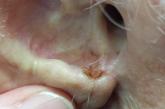Article

A guide to managing disorders of the ear pinna and canal
- Author:
- Kristen Grine, DO
- Mark Stephens, MD
This review will help you troubleshoot everything from infections and foreign bodies to trauma and neoplasm.
Article
Can you differentiate bacterial from viral pediatric infections based on the CBC?
- Author:
- Mark Stephens, MD
- Wayne Robert Smith, DO
- Kristin Hitchcock, MSI
EVIDENCE-BASED ANSWER: No—the complete blood count (CBC) alone does not have adequate sensitivity or specificity to tell bacterial from viral...
